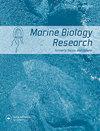印度洋丝鲨的邻苯二甲酸酯浓度及其长期饮食风险
IF 1.2
4区 生物学
Q4 ECOLOGY
引用次数: 1
摘要
邻苯二甲酸酯(PAEs)是塑料制品中常见的新兴污染物。因此,海洋环境中不断增加的塑料污染扩大了它们的进入和对水生物种的潜在影响。同样,污染物可能会积聚在鲨鱼等顶级捕食者体内,并在许多国家被大量消耗。因此,本研究评估了10种PAEs增塑剂在具有重要商业价值的印度洋绢鲨(Carcharhinus falciformis)体内的浓度及其对儿童和成人的毒性风险。结果显示,ΣPAEs在鲨鱼肌肉中的浓度在5402 ~ 34577 ng/g ww之间。在靠近海岸(岛屿)、受人类活动影响较大的地区,丝鲨肌肉中的PAEs含量似乎高出六倍。低分子量PAEs如DMP和DnBP在鲨鱼肌肉组织中占主导地位。此外,鲨鱼肌肉中的PAE水平并没有随着长度和体重的增加而显著增加,这表明它们对所有体型的鲨鱼都有相对影响。对于每日摄入量(EDI)的估计,学龄前儿童DEHP为32 μg/kg体重/天,成人DEHP参考剂量(RfD)为20 μg/kg体重/天)为23 μg/kg体重/天。毒性风险评估显示不可接受的水平表明消费者的长期饮食风险。本文章由计算机程序翻译,如有差异,请以英文原文为准。
Concentrations of phthalate esters on Indian Ocean silky sharks and their long-term dietary consumption risks
ABSTRACT Phthalate esters (PAEs) are emerging pollutants commonly found in plastic products. Thus, increasing plastic pollution in the marine environment amplify their entry and potential impacts on aquatic species. Likewise, pollutants may accumulate in top predators such as sharks and are highly consumed in many countries. Therefore, this study evaluated the concentrations of 10 PAEs plasticizers in commercially important Indian Ocean silky sharks Carcharhinus falciformis and their toxicity risks in children and adults. Results showed the concentrations of ΣPAEs in shark muscle ranging between 5,402–34,577 ng/g ww. PAEs in silky shark muscles appeared to be six times higher in locations near the coasts (islands) with higher anthropogenic impacts. Low molecular weight PAEs like DMP and DnBP dominated PAEs in shark muscle tissues. Moreover, the PAE levels in shark muscles did not significantly increase with length and weight, indicating their relative impacts in all shark sizes. For the estimate of the daily intakes (EDI), the DEHP was 32 μg/kg bw/day in preschool children and 23 μg/kg bw/day in adults (the DEHP Reference Dose (RfD) of 20 μg/kg bw/day). Toxicity risk assessment showed unacceptable levels indicating long-term dietary risks for consumers.
求助全文
通过发布文献求助,成功后即可免费获取论文全文。
去求助
来源期刊

Marine Biology Research
生物-海洋与淡水生物学
CiteScore
2.10
自引率
0.00%
发文量
55
审稿时长
6-12 weeks
期刊介绍:
Marine Biology Research (MBRJ) provides a worldwide forum for key information, ideas and discussion on all areas of marine biology and biological oceanography. Founded in 2005 as a merger of two Scandinavian journals, Sarsia and Ophelia, MBRJ is based today at the Institute of Marine Research, Bergen, Norway. The Journal’s scope encompasses basic and applied research from all oceans and marine habitats and on all marine organisms, the main criterium for acceptance being quality.
 求助内容:
求助内容: 应助结果提醒方式:
应助结果提醒方式:


